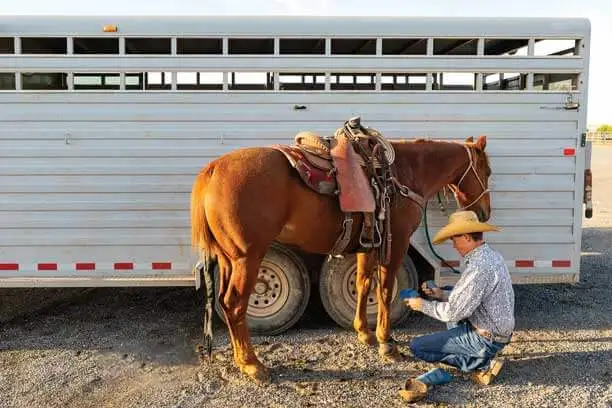What to Know While Transporting Livestock and Show Animals


When taking animals on the road, make sure that you have protection in place against the unexpected. Whether you are transporting livestock or show animals, your own or someone else’s, it’s important to understand the rules of the road.
Before hitting the road, it’s crucial to know the requirements and restrictions when hauling livestock. It’s best to plan ahead and be prepared. Understanding the basics of livestock hauling will put you in the right direction.
Having proper documentation for the animals you are hauling is a good first step. Ensuring that your permits and licenses are up to date and valid will prevent you from a run-in with the law. Make sure you have the correct license to operate your intended vehicle, a trailer that passes inspections and plate registrations up to date. The health and safety of the animals you are transporting is also important. Following bio security protocols and having proof of vaccinations will result in healthy animals, even after transportation.
While on the road, be sure to follow all state and federal laws. Whether you’re hauling these animals to the county next door or across the country, know the roads you are driving. Check with your state’s Department of Transportation to confirm your plates and registration are valid for what you are hauling. If you’re traveling out of state, make sure you have the correct documentation for that as well.
When hauling livestock or show animals, having a plan in place for the unexpected is critical. Preparing routes to and from your destination, knowing the purpose for your trip, and the overall health of your animals is of the utmost importance in case something happens. A snowstorm in South Dakota or a flat tire in Kansas can be determining factors of the health and safety of both you and your animals. Having the details of your trip lined up will set you up for success.
There are several factors to consider when transporting livestock or show animals. The most important aspects of it are making sure your vehicle supports this transportation and that the animals are comfortable in their environment.
When transporting smaller animals, such as chickens, to show at your county fair, you may consider crates secured in the bed of your pickup truck. For larger animals, such as cattle, a livestock trailer will be necessary.
Keeping your trailer clean and well maintained is essential to not only arriving at your destination, but also providing a comfortable environment for the animals. There are many trailer tips for hooking it up, checking safety features and how to get on the road.
One of the most stressful parts of transportation for an animal is during the loading and unloading process. Be sure to keep a calm composure while handling the animal and allow it to see you as you enter and exit the trailer. When unloading, open the gate and let the animal make its way towards the exit, never backing it into a corner.
Another stressful situation for animals can be during the movement of the truck or trailer. Driving smart and with caution will make your animals less stressed out and avoid the chance of having a rollover or accident.
Finally, like humans, animals appreciate climate control. If you’re transporting in the summer, make sure there’s good air flow and ventilation throughout the transportation process. If you’re transporting in the winter, do your best to close off large openings to the bitter cold, while still leaving space for the animals to breathe.
Providing food and water for your livestock is crucial to its overall mental well-being. Depending on the species and how far you’re traveling, it’s important to be prepared for your animal. The Twenty-Eight Hour Law states that livestock being transported for longer than 28 consecutive hours must be offloaded for at least five consecutive hours to get feed, water and rest. If you need to take a break at a rest stop, be sure to park in a shaded area to keep the animal out of direct sunlight.
Before taking off, you’ll want to make sure you’re properly insured for your trip. Whether you’re hauling your own livestock or someone else’s, check that your coverage includes truck, liability and livestock insurance. In addition to basic livestock insurance, consider adding livestock hauling and livestock transit to your plan. If you are hauling for a fee, you may need another special coverage. Contact your local Farm Bureau agent to make sure you’re covered to your needs. When hauling livestock and show animals, it’s better to be safe than sorry, for both you and the animals.